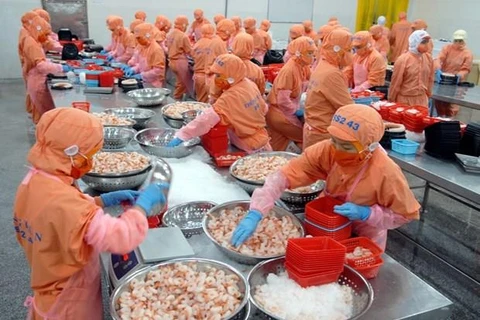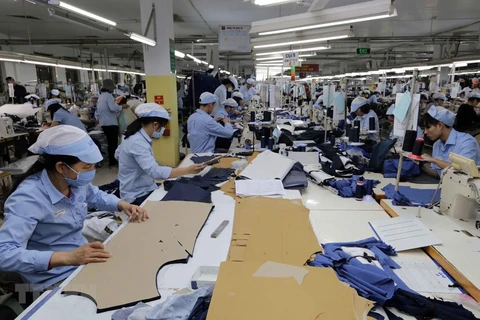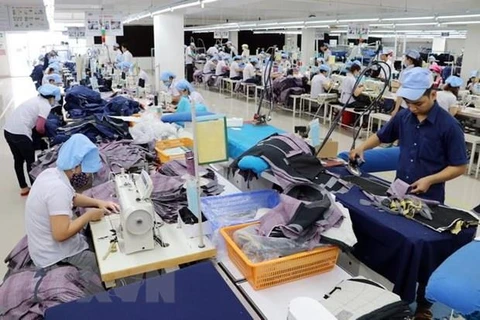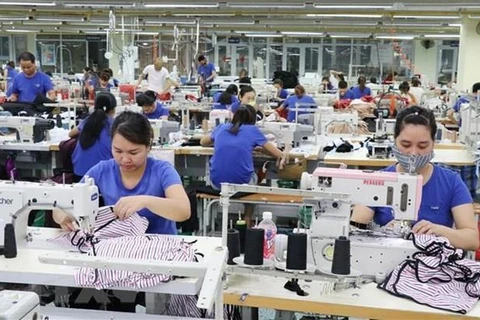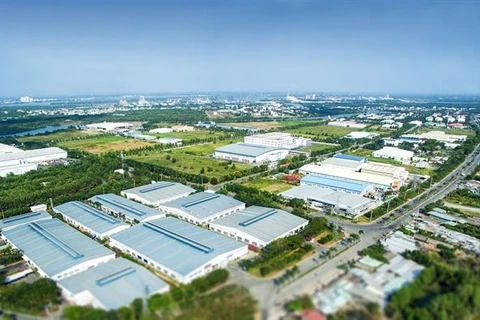 The CPTPP has helped Vietnam tip its trade scale in favour of exports, according to General Department of Vietnam Customs (Photo: VNA)
The CPTPP has helped Vietnam tip its trade scale in favour of exports, according to General Department of Vietnam Customs (Photo: VNA) Hanoi (VNA) – Vietnam recorded a trade surplus of over 1 billion USD with the 10 other members of the Comprehensive and Progressive Agreement for Trans-Pacific Partnership (CPTPP) in the seven months since the deal took effect in the country in January, according to the General Department of Vietnam Customs.
The CPTPP, one of the largest trade pacts in the world, covers 13.5 percent of global GDP and a market of about 500 million people. It gathers 11 countries, namely Australia, Brunei, Canada, Chile, Japan, Malaysia, Mexico, New Zealand, Peru, Singapore and Vietnam.
It officially took effect in Vietnam on January 14 this year.
The authority further said the country’s exports to the CPTPP members like Japan, Canada and Mexico rose considerably in the first seven months of the year. The shipments to Japan reached 1.01 billion USD, Canada 546 million USD and Mexico 290 million USD.
Meanwhile, imports from Mexico dropped by 659 million USD, Singapore down 490 million USD, and Malaysia down 219 million USD.
Exports to the CPTPP countries since the year’s beginning have accounted for 15.4 percent of the total export revenue. Additionally, six of the 27 markets to which Vietnam’s shipments surpassed 1 billion USD are CPTPP economies.
These figures show that the agreement has helped Vietnam tip its trade scale in favour of exports, the general department said.
At a working session with Director of the Ho Chi Minh City Customs Deparment Dinh Ngoc Thang on August 12, Canadian Consul General in Ho Chi Minh City Kyle Nunas said with a relatively short roadmap for tariff reductions by Canada (from 17 – 18 percent to zero percent in three years), some groups of Vietnamese commodities are forecast to enjoy strong export growth as from 2019 such as textile-garment, footwear, handbags, and plastic and wood products.
Businesses and investors of Canada are also paying special attention to Vietnam’s roadmap for opening its market for several agricultural products like pork, beef, chicken, aquatic products and fresh fruits, he noted.
Australia is also a potential market for Vietnamese goods. As soon as the CPTPP came into force, Vietnam began making use of opportunities generated by the deal to boost shipments to Australia. Notably, it has dominated the tra fish market there as it supplies up to 98 percent of the tra fish amount consumed in the country.
Nguyen Thi Thu Trang, Director of the WTO Centre under the Vietnam Chamber of Commerce and Industry (VCCI), said the CPTPP economies’ stronger demand for Vietnamese agricultural products is expected to help local exporters offset the recent decline in the export of those items to China, which has tightened import regulations.
Shinji Hirai, chief representative of the Japan External Trade Organisation (JETRO) in Ho Chi Minh City, said the CPTPP will consolidate Vietnam’s role as a production and export hub of businesses of Japan as well as other member countries. In return, Vietnamese firms will also gain similar benefits when it enters the markets of other CPTPP nations./.
VNA
